We looked closely at Kitchen Aid, GE Cafe and the Jenn-Air Pro-Style line of kitchen appliances. We liked some features and specifications of each, for different reasons. We're new to gas cooking, so either purchase would have been an improvement for us. Appliance upgrades and replacement, rather than new construction or remodeling, were the driving forces behind out purchase. Ultimately, we built the kitchen around our need for a standard 30-inch range, and I think most people should start the appliance selection process by assessing their range and refrigerator needs.
In a twist, we purchased the matching, Jenn-Air range, microwave and dishwasher, and paired these with the GE Cafe refrigerator. For us, function trumped form to some extent. For reasons that will become obvious in this post, our kitchen design forced us to those Jenn Air products, but we did not like the Jenn Air refrigerator, which was smaller. Also, the Jenn Air refrigerator had a more spartan interior with narrower shelves. Since many very nice kitchens actually have refrigerators that are a different brand from the other appliances, we ended up purchasing the GE Cafe, counter-depth, side-by-side refrigerator because of it's larger capacity. A different approach -- yes. But we had solid reasons for this.
The GE Cafe line is a relatively newer product (about two years old in March 2009), and as many people note, the styling is very attractive. It clearly is the most elegant design of the three brands -- combining a beefy, commercial look with softer styling. Largely, this is due to GE's use of gracefully-rolled front edges on the Cafe appliances and brushed stainless steel that has a silky appearance and subtly, warm (red/yellow) tones. The new, steel knobs on the GE Cafe range also are quite beautiful -- and a welcome improvement recommended by early buyers who complained about the original plastic knobs. The competing Jenn-Air and Kitchen Aid products we considered also use very nice stainless steel too, but the brushed-steel facing on these have a subtly cooler (blueish) tint and sharper corners. Their appearance is just a bit different, and perhaps slightly more commercial. I don't like the look of the knobs on the Jenn-Air range nearly as well either, and they feel like they rub against something when turned.
Fortunately, both the Jenn Air and GE Cafe lines use thick, towel-bar style handles that are very similar in appearance. Installed, the stainless steel doesn't look that different and the GE refrigerator complements the other Jenn Air appliances nicely. Finally, the oversized, retro-style GE and Jenn Air badges each project a proud lineage that serves to call attention to the otherwise subtle differences between the two products.
We did like the idea of the built-in griddle on the GE Cafe's range, but it is shoehorned into a 30-inch cooktop and the griddle does have lower, BTU-output and a smaller cooking surface than standard two-burner griddles. The GE Cafe refrigerator is taller, and we had to cut 1 1/2 inches of trim from the bottom of the upper cabinets to squeeze it into the space, but I'm glad we did this. The slightly taller refrigerator compartment allows this appliance to accommodate tall bottles of wine or cider and larger items such as a turkey without losing a shelf. The GE refrigerator's compartment design is well though out and just works. By the way, we chose a side-by-side instead of the newer French-door design because of the greater refrigerator capacity.
I have only two gripes about the GE Cafe refrigerator:
- The use of old-fashioned, incandescent light bulbs instead of newer LED lighting.
- The lack of a built-in cold drink compartment in the door. Beverages stored in the GE's door do not stay quite as cold as they should, though this only is off by 1 or 2 degrees. The comparable Jenn-Air model has LED lights and an enclosed compartment for this dairy beverages like milk, and extra cold air is piped in to keep dairy beverages cooler.
My major gripe about the Jenn Air appliances:
- The electronic keypad interfaces are not intuitive and they require more steps (and button pushes) to bake, microwave and even wash dishes. Even the interface on our older GE appliances were easier to use. Secretly, I wish Apple would branch out and produce intuitive touch screen interfaces for appliances like this. Both companies could use some help in this area. Jenn-Air lags behind GE, but neither are in Apple's league.
While we liked the looks of the GE Cafe line best of all, the freestanding Cafe range could not really be installed in our existing tile-counter setup. New counters were not in our budget, and besides, our 20-year-old kitchen has nice (and very well-maintained) tile and grout. But the old range (a GE slide-in with a top lip that overlapped the counter) hid the rough tile cut. The Jenn-Air Pro-Style range is a freestanding slide-in with the overlapping lip we needed. While the Jenn Air range was the best fit for our kitchen, the larger capacity, GE Cafe refrigerator best met our needs. These specifications limited our purchase and installation options and drove our decision to mix two different brands of appliances.
I was told that the Jenn Air Pro Style line has been around for five or six years, Also, I seem to recall that Consumer Reports rated the Jenn Air products slightly higher than other similar products in their price range. The service also noted that the GE Cafe line had not been available long enough to rate (when we purchased). However, GE Cafe products have been available long enough for GE to begin making refinements and improvements to eliminate some initial design or manufacturing flaws. In reality, the Jenn Air Pro Style and GE Cafe appliances are in a category by themselves -- commercial-style appliances with SOME commercial features for smaller kitchens. The Kitchen Aid line is similar, though perhaps more full-featured and a bit more expensive.
We learned that equipping a kitchen requires assessing your needs, picking a design style, researching the feature options, evaluating the strengths and weaknesses of the available products and then making a series of compromises to choose the best product(s) that meet your needs. For our budget, we feel we got the best of many worlds.
RE: Griddles
See my separate post on the very best cast iron griddle (Lodge Logic LPG 13) for gas ranges.
RE: burner BTU-output
"...I love the power burner and wish they were all like that one. The others don't go as high OR as low, so I see them as inferior to the power burner..."
These "prosumer" gas ranges are designed with building codes (and maximum BTU output) in mind. A stove with four, high-BTU gas power burners would require a hood, which would limit the market, uses and sales of these appliances. While custom homes probably are designed with pro-style ranges in mind, the majority of tract homes (even nicer ones) have smaller kitchens, microwave ovens with a built-in, range-venting system installed above the stove, and few or no options for relocating the microwave. Consequently, a hood with higher air movement cannot easily be installed (short of a major renovation and $50,000 kitchen redesign). Manufacturers design these down-scaled four-burner gas stoves with individual burners that have limited BTU capacities to meet fire codes. One high-BTU burner means you have to reduce the output on another burner to stay within the code for maximum output in a residential kitchen with a microwave venting system.

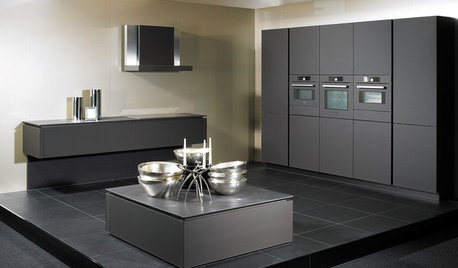



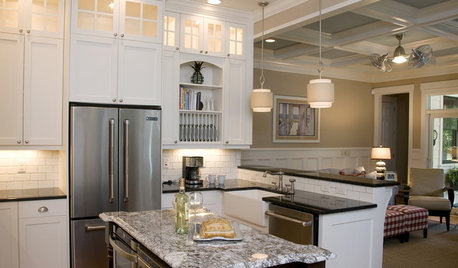
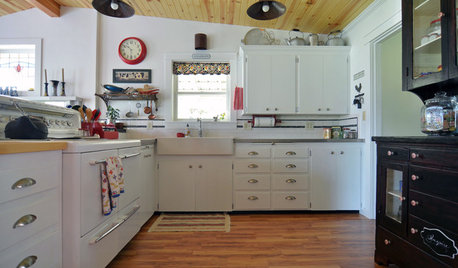
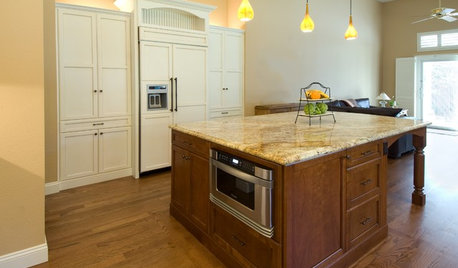

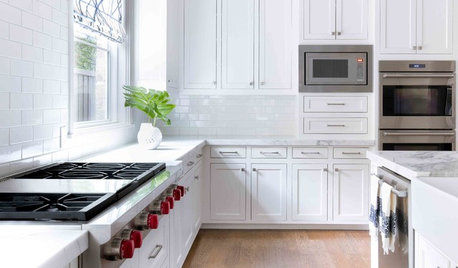



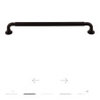


marciag
hd_boyOriginal Author
Related Discussions
GE Cafe versus Jenn Air Premier Line Pro gas range???
Q
Reliability of Jenn-air appliances or what brand should I get
Q
Ge Cafe appliance opinions?
Q
Jenn Aire gas range jgs8860bdp-does anyone own one?
Q
thereddogruby